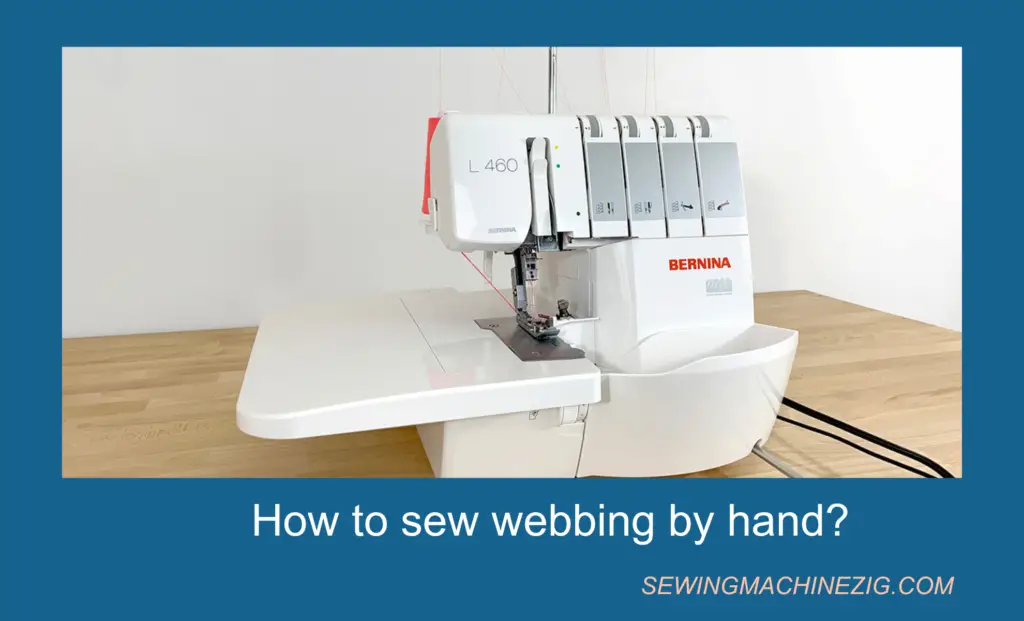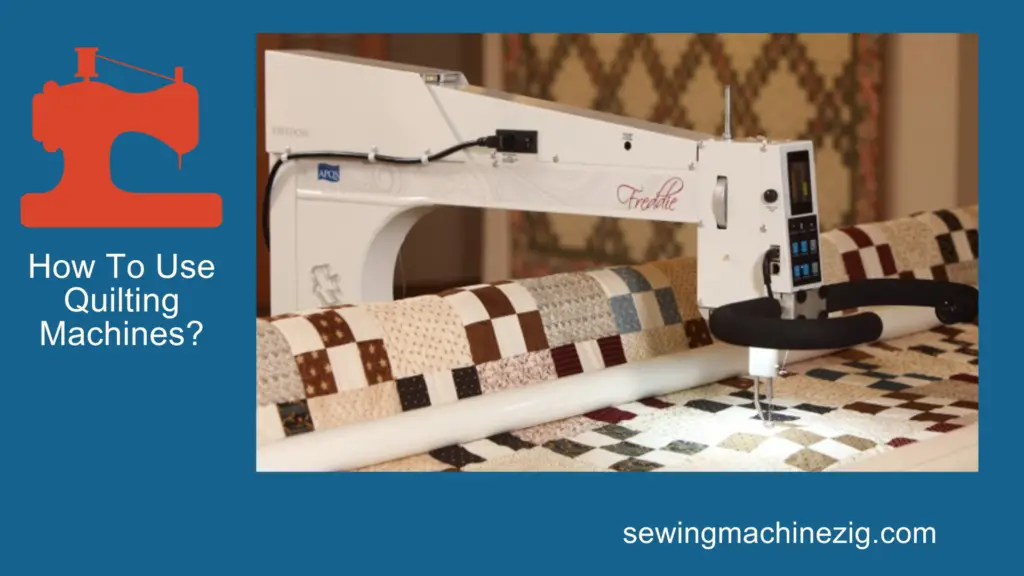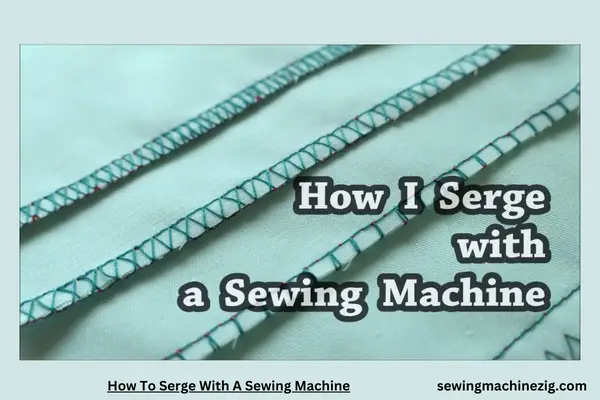
An overlock sewing machine is a specialized machine that is used to create neat and professional-looking seams on the edges of the fabric. It is also known as a serger in some countries. Overlock machines are commonly used in the garment industry, as they are designed to quickly and efficiently create finished seams on a variety of fabrics.
Thank you for reading this post, don't forget to subscribe!Here we will discuss how an overlock sewing machine work, An overlock machine works by trimming the fabric edge and simultaneously sewing over it, creating a finished edge that is resistant to fraying. There are many overlock sewing machines available in the market but here we will discuss the most common machines which are mostly used for clothing. In this article, we will discuss everything about How Does An Overlock Sewing Machine Work.
Type of Overlock Sewing Machine Work:
There are many overlock sewing machines available in the market but here we will discuss the most common machines which are mostly used for clothing.
- 2-Thread overlock sewing machine
- 3-Thread overlock sewing machine
- 4-Thread overlock sewing machine
- 5-Thread overlock sewing machine
Overlock machines can create a variety of stitches, including 2-thread, 3-thread, 4-thread, and 5-thread stitches. Each stitch has different properties, such as the number of threads used. The general procedure for using a 2-thread, 3-thread, or 4-thread overlock machine is similar, but there are some differences in the way the machines are set up and operated, there are several types of overlock sewing machines available in the market.
What Is A 2-Thread Over-Lock Sewing Machine?
A 2-thread sewing machine is a type of serger or over-lock machine that uses two threads and one needle to create a secure and stretchy seam, that can be used on a wide range of fabrics, particularly lightweight fabrics like silk, chiffon, and jersey knit. How does an overlock sewing machine work, the machine’s cutting blade trims the fabric edges as it sews, which helps prevent fraying and creates a neat and professional finish. Unlike a 3 or 4-thread overlock machine, a 2-thread machine creates a narrower and less bulky seam finish.
How To Use A 2-Thread Over-Lock Sewing Machine:
Materials:
- Fabric
- Thread
- Scissors
- Seam gauge
- Pins
- Seam ripper
- Iron and ironing board
Steps:
How does an overlock sewing machine work:
1. Before using the machine:
Prepare your fabric by cutting it to the desired size and shape and finishing the edges as needed. A 2-thread machine is best used on lightweight fabrics.
2. Thread the machine:
Thread the machine with two spools of thread, one for the upper looper and one for the lower looper. Follow the threading guide on your machine to ensure that the threads are correctly positioned and tensioned.
3. Adjust the machine:
Adjust the machine settings to create a 2-thread overlock stitch. Set the stitch length and differential feed according to the type of fabric you are using. Lower the cutting blade, as a 2-thread overlock stitch doesn’t require the fabric to be cut.
4. Before starting your project:
Test the machine on a scrap piece of fabric to ensure that the stitch looks good and the tension is correct. Adjust the tension as needed to create a balanced stitch.
5. Place the fabric:
Place the fabric under the presser foot, making sure that the edge of the fabric lines up with the cutting blade. Hold the fabric securely in place and lower the presser foot.
6. Begin stitching:
Begin stitching slowly making sure that the fabric is feeding evenly through the machine. Guide the fabric through the machine, keeping the edge aligned with the cutting blade.
7. Finish the seam:
Stitch all the way to the end of the fabric, making sure to backstitch at the beginning and end of the seam. Remove the fabric from the machine and trim any loose threads.
That’s it now all you need is to clean your sewing for the next over-lock.
What Is A 3-Thread Over-Lock Sewing Machine?
A 3-thread overlock machine is a type of sewing machine that uses three threads to create a strong and durable overlock stitch, a 3-thread overlock machine is a bit different from using a regular sewing machine, but it is not difficult to master with a bit of practice and then you will get used to it how does an overlock sewing machine work, I have used this type of machine many times in my sewing projects, and it has become one of my favorite tools in the sewing room.
How To Use A 3-Thread Over-Lock Sewing Machine:
Materials:
- 3-thread overlock sewing machine
- Thread (preferably a polyester or cotton blend)
- Fabric to be sewn
- Scissors
- Pins
- Fabric
Steps:
How does an overlock sewing machine work:
- Prepare your machine by threading:
One of the first things you have to do when using a 3-thread overlock machine is to thread the machine with three spools of thread. Two of the spools are used for the needles, and one spool is used for the looper. Threading the machine can take a bit of time to get the hang of, but once you do, it becomes much easier.
- Adjust the settings:
Once the machine is threaded, you have to adjust the settings to create a 3-thread overlock stitch. The stitch length and differential feed are adjusted according to the type of fabric you are using as needed to create a balanced stitch.
- Start stitching:
Begin stitching when you are ready. Place the fabric under the presser foot, making sure that the edge of the fabric lines up with the cutting blade.
- Keep stitching:
Guide the fabric through the machine, keeping the edge aligned with the cutting blade, and stitch all the way to the end of the fabric.
- Finish stitching:
Make sure to backstitch at the beginning and end of the seam, also when you reach the end of your fabric, trim the excess thread.
One of my favorite things about using a 3-thread overlock machine is that it can be used to create a variety of different stitches, including overlock stitches, rolled hems, and decorative stitches. By adjusting the settings and experimenting with different thread types and tensions.
What Is A 4-Thread Over-Lock Sewing Machine?
A 4-thread overlock machine is a powerful tool that is commonly used in sewing rooms to create professional and high-quality seam finishes. As an experienced sewist, I have used a 4-thread overlock machine many times, and it has become an essential part of my sewing arsenal. One of the benefits of using a 4-thread overlock machine is that it can handle a wide variety of fabrics, from lightweight knits to heavier denim or canvas.
How To Use A 4-Thread Over-Lock Sewing Machine:
Materials:
- 4-thread overlock sewing machine
- Thread (preferably a polyester or cotton blend)
- Fabric to be sewn
- Scissors
- Pins
Steps:
How does an overlock sewing machine work:
- Threading Machine:
To use a 4-thread overlock machine, first, need to make sure that you have four spools of thread. Two spools of thread are used for the needles, while the other two spools are used for the upper and lower loopers.
- Adjust settings:
Once the machine is threaded, adjust the settings according to the type of fabric. This includes adjusting the stitch length, differential feed, and tension settings. By tweaking these settings, you can achieve a perfectly balanced and strong seam that will hold up to wear and tear.
- Pins:
Using pins to hold the fabric in place, also gives you a fine stitch.
- Start stitching:
When it comes time to stitch, you have to guide the fabric under the presser foot and align the fabric edge with the cutting blade.
- Continue sewing:
As you stitch, the machine cuts and trims the fabric edge, creating a clean and professional-looking finish. To create a safety stitch, sew a second line of stitches just inside the first line.
- Finish Stitching:
When you reach the end of your fabric, trim the excess thread. Remove the fabric from the machine and trim any excess fabric that remains.
Another great feature of a 4-thread overlock machine is that it can be used to create a range of different stitch types, including overlock stitches, rolled hems, and flatlock stitches. By adjusting the settings and experimenting with different threads.
What Is a 5-Thread Over-Lock Sewing Machine?
A 5-thread overlock machine is similar to a 4-thread overlock machine, but it has an additional spool of thread that is used for a safety stitch. This safety stitch adds extra strength and stability to the seam, making it ideal for heavy-duty fabrics or garments that require a lot of wear and tear. Dealing with a 5-thread overlock machine can be a bit complicated for a beginner, but when you understand how an overlock sewing machine works, it will be easy for you to handle any situation.
How To Use A 5-Thread Over-Lock Sewing Machine:
Materials:
- 5-thread overlock sewing machine
- Appropriate thread spools for your fabric
- Fabric to sew
- Scissors
- Seam ripper
- Tweezers
- Thread
Steps:
How does an overlock sewing machine work:
- Thread the machine:
To use a 5-thread overlock machine, you must first ensure that you have five spools of thread.
Two spools of thread are used for the needles, while the other three spools are used for the upper and lower loopers, and the safety stitch.
Threading the machine can be a bit tricky, but it’s important to make sure that each thread is properly seated in its designated tension discs and guides.
- Adjust the stitch length and width:
Once the machine is threaded, you can adjust the settings to suit the fabric you are working with. This includes adjusting the stitch length, differential feed, and tension settings.
A 5-thread overlock machine is typically used for finishing the edges of seams, so it’s important to make sure that the settings are adjusted correctly to prevent the fabric from puckering or stretching.
- Test the stitch:
Before starting to sew, test the stitch on a scrap piece of fabric to ensure that the settings are correct and that the stitch looks as you want it to.
- Position the fabric:
When you’re ready to sew, place the fabric under the presser foot, and align the edge of the fabric with the cutting blade.
- Begin sewing:
Start sewing slowly, ensuring that the fabric is feeding evenly through the machine. Use your left hand to guide the fabric and your right hand to hold the fabric behind the needle and the machine will trim and finish the edge of the fabric with a neat and professional-looking seam.
- Check the tension:
As you sew, check the tension of the threads. If the tension is too loose, the stitches will look sloppy, and if the tension is too tight, the fabric will pucker. Adjust the tension as necessary.
- Finish the seam:
When you reach the end of the fabric, lift the presser foot and cut the threads using scissors. Use a seam ripper to remove any excess threads and use tweezers to trim any loose threads.
- Clean the machine:
After you finish sewing, clean the machine by removing any excess fabric, lint, or thread from the machine. Use a soft brush or a lint roller to clean the machine.
- Change thread colors:
If you need to change thread colors for a different part of the project, follow the same threading process for the new color.
Practice and experiment:
The more you use your 5-thread overlock sewing machine, the more comfortable you will become with the settings, tension, and stitch quality. Take the time to experiment with different fabrics, stitch lengths, and widths to find what works best for your project.
Conclusion:
An overlock sewing machine is an important tool for creating finished seams on a variety of fabrics. It works by using multiple needles and loopers to create an overlock stitch, which sews over the edge of the fabric, preventing it from fraying and creating a finished edge. How does an overlock sewing machine work? Well, An overlock sewing machine can create a variety of stitches, including a 2-thread, 3-thread, 4-thread, 5-thread overlock, a rolled hem, and a flatlock stitch. It can be used with a wide range of fabrics, including knits, wovens, and even some stretchy fabrics like spandex and Lycra.
FAQs:
What is an overlock stitch?
An overlock stitch is a type of stitch that sews over the edge of the fabric, preventing it from fraying and creating a finished edge. It is commonly used to create seams on knit fabrics and is often seen on t-shirts, sweatshirts, and other stretchy garments.
How does an overlock sewing machine work?
An overlock sewing machine works by using multiple needles and loopers to create an overlock stitch. The needles sew the fabric together while the loopers create the thread loops that wrap around the edge of the fabric, creating a finished edge.
What types of stitches can an overlock sewing machine create?
An overlock sewing machine can create a variety of stitches, including a 3-thread overlock, a 4-thread overlock, a rolled hem, and a flatlock stitch.
What is a 3-thread overlock stitch?
A 3-thread overlock stitch is a stitch that uses three threads to create a seam. It is often used on lightweight or medium-weight fabrics and creates a narrow seam that is suitable for finishing the edges of the fabric.
What is a 4-thread overlock stitch?
A 4-thread overlock stitch is a stitch that uses four threads to create a seam. It is often used on heavyweight fabrics and creates a wider seam that is more durable than the 3-thread overlock stitch.
What is a rolled hem?
A rolled hem is a type of stitch that creates a narrow, rolled edge on the fabric. It is often used on lightweight fabrics and is a popular choice for finishing the edges of scarves and other accessories.
What is a flatlock stitch?
A flatlock stitch is a stitch that creates a flat, visible seam on the fabric. It is often used on sportswear and other types of activewear and creates a durable, flexible seam that is suitable for high-impact activities.
What types of fabrics can be used with an overlock sewing machine?
An overlock sewing machine can be used with a wide range of fabrics, including knits, wovens, and even some stretchy fabrics like spandex and Lycra.
How do I thread an overlock sewing machine?
Threading an overlock sewing machine can be a bit more complicated than threading a standard sewing machine. It is important to follow the instructions carefully and to make sure that the thread is properly tensioned to prevent the machine from skipping stitches.
How do I maintain my overlock sewing machine?
Regular maintenance is important for keeping your overlock sewing machine in good working order. This includes cleaning the machine after each use, oiling the moving parts, and replacing any worn or damaged parts as needed.


